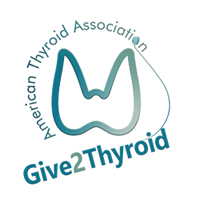SUMMARY OF THE STUDY
This study examined the medical records of 415 pregnant women who had Graves’ disease and positive TRAb testing during their pregnancy at multiple obstetric centers in Paris, France. Also, in addition to symptoms and signs of hyperthyroidism, blood test reports of infants born to the mothers with this condition and any neck ultrasound data in them were studied. Well defined laboratory ranges were used to diagnose hyperthyroidism in the newborns.
A total of 149 babies (35.9%) had positive TRAb tests, which took an average of 20 days to decline to normal. A total of 23 babies (5.5%) had neonatal hyperthyroidism of varying severity based on clinical symptoms; 17 of these had hyperthyroidism determined by blood testing. The mothers of 20 of the infants with neonatal hyperthyroidism were treated with antithyroid drugs in the 3rd trimester. The infants with neonatal hyperthyroidism were born earlier than the infants without neonatal hyperthyroidism (37 vs. 38.5 weeks) and at lower birth weights (average 2809 vs. 3013 g). Antithyroid drugs were used to treat 17 hyperthyroid infants and 14 of these became hypothyroid and subsequently required levothyroxine treatment.
Among infants of mothers with Graves’ disease, a serum TSH <0.9 mIU/L at days 3 to 7 after birth had a higher chance of having higher levels of the thyroid antibody and /or developing hyperthyroidism (although the overall risk was low) that babies with higher TSH levels.
WHAT ARE THE IMPLICATIONS OF THIS STUDY?
This study showed that in addition to the mother’s history and laboratory testing, additional tests in the newborn can help predict which newborns are at a higher risk of developing hyperthyroidism. Although further studies are needed to further understand the risk of developing this condition in the newborns, it is helpful to know some of the risk factors that can help predict neonatal Graves’ disease before the onset of symptoms.
— Vibhavasu Sharma,MD




